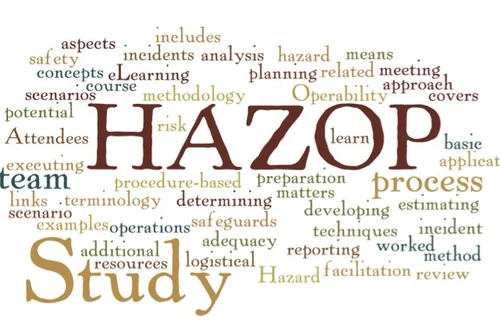Process Safety Management Compliance: Everything You Need to Know
Process Safety Management Compliance: Everything You Need to Know

Introduction: Understanding Process Safety Management Compliance
Process Safety Management (PSM) is a critical regulatory framework designed to prevent hazardous incidents in industries handling high-risk chemicals and processes. Compliance with PSM standards ensures workplace safety by identifying, assessing, and controlling operational hazards.
Industries such as oil & gas, pharmaceuticals, petrochemicals, and manufacturing must adhere to strict PSM guidelines to mitigate risks, ensure legal compliance, and protect both human life and assets. This article will explore the essential components of PSM compliance, its regulatory requirements, and best practices for maintaining workplace safety.
What Is Process Safety Management (PSM) and Why Is It Important?
Process Safety Management is a structured approach to identifying, analyzing, and mitigating hazards associated with industrial processes involving toxic, reactive, or flammable substances. Compliance with PSM standards reduces the likelihood of industrial accidents, fires, explosions, and chemical leaks.
Key Objectives of PSM Compliance
-
Prevent catastrophic incidents by managing process risks.
-
Ensure operational reliability through structured safety measures.
-
Protect workers, the environment, and assets from potential hazards.
-
Comply with regulatory standards established by authorities such as OSHA, EPA, and local safety regulations.
Organizations implementing Process Safety Management must integrate preventive and control measures to enhance workplace safety.
What Are the Key Elements of Process Safety Management Compliance?
PSM compliance is governed by 14 essential elements that provide a systematic approach to handling process safety risks.
Core Components of PSM Compliance
-
Process Safety Information (PSI) – Documenting technical details about hazardous chemicals and processes.
-
Process Hazard Analysis (PHA) – Conducting systematic hazard assessments such as a HAZOP Study.
-
Operating Procedures – Establishing standardized safety protocols for normal and emergency operations.
-
Employee Training – Ensuring personnel are well-trained in safety measures and emergency procedures.
-
Mechanical Integrity – Regular inspection and maintenance of equipment handling hazardous processes.
-
Management of Change (MOC) – Implementing structured evaluations when modifying equipment or processes.
-
Pre-Startup Safety Review (PSSR) – Conducting safety assessments before introducing new or modified processes.
-
Emergency Planning and Response – Preparing organizations to handle emergency situations effectively.
-
Incident Investigation – Analyzing past incidents to prevent future occurrences.
-
Compliance Audits – Regular Safety Audit assessments to identify and rectify potential risks.
-
Contractor Safety Management – Ensuring third-party contractors comply with PSM protocols.
-
Hot Work Permits – Implementing safety measures for high-risk operations.
-
Trade Secret Protection – Safeguarding confidential process safety information.
-
Employee Participation – Engaging employees in maintaining a safe work environment.
By integrating these elements, companies can ensure compliance, operational efficiency, and risk mitigation.
How to Conduct a Process Hazard Analysis (PHA) for Compliance?
Process Hazard Analysis (PHA) is a systematic method for identifying, evaluating, and controlling hazards. Regulatory authorities require industries to perform regular PHA assessments as part of PSM compliance.
Steps in Conducting an Effective PHA
-
Define Scope and Objectives – Identify the processes and hazards to be analyzed.
-
Select the Right Methodology – Common methods include HAZOP (Hazard and Operability Study), What-If Analysis, Fault Tree Analysis, and Failure Mode and Effects Analysis (FMEA).
-
Gather Process Safety Information – Document chemical properties, process conditions, and safety measures.
-
Identify Hazard Scenarios – Evaluate risks associated with equipment failure, human error, or process deviations.
-
Assess Risk Levels – Determine the probability and impact of potential hazards.
-
Develop Mitigation Strategies – Implement corrective actions such as engineering controls, administrative procedures, and safety barriers.
-
Document Findings and Recommendations – Maintain detailed records for compliance audits and future reference.
Industries can enhance hazard identification and risk mitigation by conducting a comprehensive HAZOP Study as part of their PHA process.
What Are the Common Challenges in PSM Compliance?
Despite its importance, organizations often face several challenges in achieving full compliance with PSM regulations.
Key Challenges and Their Solutions
-
Lack of Awareness & Training → Conduct regular employee training programs.
-
Inadequate Documentation → Maintain detailed process safety records and audit reports.
-
Poor Management of Change (MOC) Implementation → Establish structured change management protocols.
-
Failure to Conduct Regular Audits → Schedule routine Safety Audits for compliance assessment.
-
Inconsistent Equipment Maintenance → Implement preventive maintenance programs to ensure mechanical integrity.
Addressing these challenges improves compliance efficiency and workplace safety.
What Is the Role of Safety Audits in PSM Compliance?
Regular safety audits play a crucial role in evaluating compliance with PSM standards. Organizations must conduct periodic audits to identify potential risks and implement corrective measures.
Benefits of Conducting Regular Safety Audits
✔ Identifies non-compliance issues before incidents occur.
✔ Improves risk management by assessing process vulnerabilities.
✔ Ensures legal compliance with safety regulations.
✔ Enhances employee safety and operational efficiency.
Industries should integrate comprehensive Fire Audits and Safety Audits as part of their overall PSM strategy.
How Can a Safety Consultant Help with PSM Compliance?
Organizations struggling with PSM implementation and compliance can benefit from expert guidance. A Safety Consultant provides specialized expertise in hazard assessments, process safety planning, and regulatory compliance.
Key Responsibilities of a Safety Consultant in PSM Compliance
-
Conducts Process Hazard Analyses (PHA).
-
Develops customized PSM programs based on industry requirements.
-
Provides training for employees on hazard identification and risk management.
-
Assists in regulatory documentation and compliance audits.
-
Recommends best practices for safety management and emergency response planning.
Engaging safety experts ensures compliance with PSM standards while enhancing workplace safety.
Conclusion: Ensuring Long-Term Compliance with PSM Regulations
Process Safety Management compliance is essential for industries dealing with hazardous processes. By integrating PHA assessments, safety audits, employee training, and risk mitigation strategies, organizations can prevent industrial accidents and improve workplace safety.
Adopting a proactive safety culture, backed by regular audits, hazard studies, and expert guidance, ensures continuous compliance with safety regulations. Businesses must prioritize process safety management to achieve a safer, more efficient, and legally compliant work environment.






